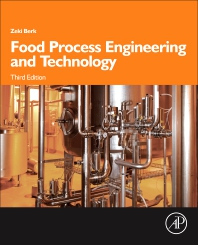IR pasteurization fits process and quality specs
3D modeling system provides customization to fit processor needs.

Butterball’s deli customers and supermarket chain customers have begun to request infra-red (IR) pasteurization on precooked meats as an assurance of safety for the meat and poultry products they sell. IR pasteurization is capable of reducing bacteria count by a 3 log factor. “Our basic concern is to ensure the wholesomeness of our product,” says Steve Valesko, Butterball’s vice president of engineering, “and that entails the necessary protection of our deli products prior to sealing them in the bag.”
While it was easy to introduce IR equipment to the process, Valesko’s needs were more complex. “Although we were primarily interested in the food safety benefits of IR pasteurization as well as protecting our brand, we also felt there was an opportunity to optimize the equipment in terms of human safety and ease of maintenance,” says Valesko. “We also sought to incorporate automation features that would monitor equipment status and notify the operator if the IR pasteurizer was approaching a need of service.”
Although Valesko anticipated the need to customize the new IR equipment to Butterball’s specs, the engineering and production groups’ project team began the move to new pasteurization equipment by trying standard equipment offered by Unitherm Food Systems. “We felt that ‘test-driving’ the standard equipment would both facilitate and expedite that process,” he says. Valesko ran the initial equipment for about a month. “Although it was quite evident that we would need to make alterations to our final IR pasteurization equipment design, that trial period permitted us to see the equipment in action and redesign it to meet the needs of both our process and our products.”
The preliminary trials, held at Butterball’s Jonesboro plant, entailed full production runs, checking product temperatures and ensuring that the IR pasteurization was effective. After the trial run, Butterball engineers and process staff decided on several upgrades for the IR pasteurizing equipment.
“What we didn’t want was to change the way the equipment operated,” Valesko explains. “Yet there were specific alterations that we knew would make the system much better for our operations.” Engineering specified a change in the way the equipment hood opens and closes, so that it is more user friendly. The outside of the trial pasteurizer would get hot, so Butterball stipulated that it be made cool to the touch. The project team also requested that the belt could be cleaned more easily.
Making changes to stock equipment and production lines can be a formidable challenge, but the supplier’s 3D modeling program made it easy to customize the system. Valesko explains, “3D modeling allowed us to see exactly what the machine was going to look like. We were able to make even further alterations than we would have otherwise, including structural changes to the frame of the machine and to where the electrical panel was going to be located.” The 3D illustrations allowed the easy adaption of equipment design to meet Butterball’s production and quality requirements. Since the original Jonesboro implementation, the system has also been installed in Butterball’s Longmont, CO operation.
For more information: David Howard, 918-367-0197, unitherm@unithermfoodsystems.com

A dual-line pasteurization system from Unitherm was modified using 3D modeling to meet Butterball’s specific operational and safety needs. Source: Unitherm.
Butterball’s deli customers and supermarket chain customers have begun to request infra-red (IR) pasteurization on precooked meats as an assurance of safety for the meat and poultry products they sell. IR pasteurization is capable of reducing bacteria count by a 3 log factor. “Our basic concern is to ensure the wholesomeness of our product,” says Steve Valesko, Butterball’s vice president of engineering, “and that entails the necessary protection of our deli products prior to sealing them in the bag.”
While it was easy to introduce IR equipment to the process, Valesko’s needs were more complex. “Although we were primarily interested in the food safety benefits of IR pasteurization as well as protecting our brand, we also felt there was an opportunity to optimize the equipment in terms of human safety and ease of maintenance,” says Valesko. “We also sought to incorporate automation features that would monitor equipment status and notify the operator if the IR pasteurizer was approaching a need of service.”
Although Valesko anticipated the need to customize the new IR equipment to Butterball’s specs, the engineering and production groups’ project team began the move to new pasteurization equipment by trying standard equipment offered by Unitherm Food Systems. “We felt that ‘test-driving’ the standard equipment would both facilitate and expedite that process,” he says. Valesko ran the initial equipment for about a month. “Although it was quite evident that we would need to make alterations to our final IR pasteurization equipment design, that trial period permitted us to see the equipment in action and redesign it to meet the needs of both our process and our products.”
The preliminary trials, held at Butterball’s Jonesboro plant, entailed full production runs, checking product temperatures and ensuring that the IR pasteurization was effective. After the trial run, Butterball engineers and process staff decided on several upgrades for the IR pasteurizing equipment.
“What we didn’t want was to change the way the equipment operated,” Valesko explains. “Yet there were specific alterations that we knew would make the system much better for our operations.” Engineering specified a change in the way the equipment hood opens and closes, so that it is more user friendly. The outside of the trial pasteurizer would get hot, so Butterball stipulated that it be made cool to the touch. The project team also requested that the belt could be cleaned more easily.
Making changes to stock equipment and production lines can be a formidable challenge, but the supplier’s 3D modeling program made it easy to customize the system. Valesko explains, “3D modeling allowed us to see exactly what the machine was going to look like. We were able to make even further alterations than we would have otherwise, including structural changes to the frame of the machine and to where the electrical panel was going to be located.” The 3D illustrations allowed the easy adaption of equipment design to meet Butterball’s production and quality requirements. Since the original Jonesboro implementation, the system has also been installed in Butterball’s Longmont, CO operation.
For more information: David Howard, 918-367-0197, unitherm@unithermfoodsystems.com
Looking for a reprint of this article?
From high-res PDFs to custom plaques, order your copy today!







